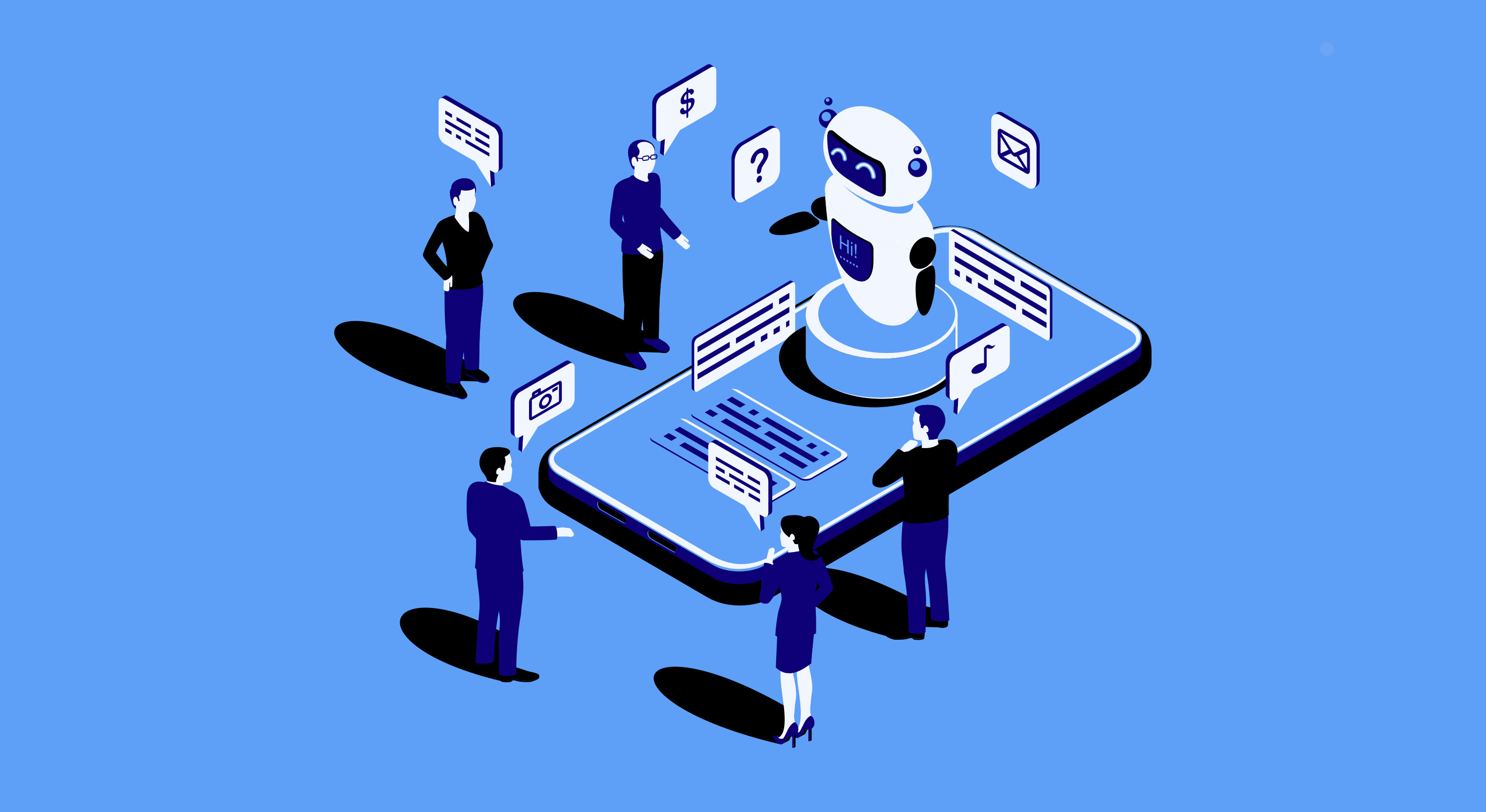Artificial intelligence has the power to automate and streamline countless business processes and improve efficiency across just about every sector. However, AI tools (and the humans using them) need guidance and training to perform to their full potential, which makes strong leadership more important than ever. Multinational consultancy PricewaterhouseCoopers (PwC) expects to spend billions of dollars to build out its use of artificial intelligence (AI) and focus more of its client services on the technology.
Last year, for example, PwC announced it would spend $1 billion over three years to expand and scale its AI offerings, and another $2.3 billion on “modernizing” its internal platforms to embed new generative AI (genAI) tools. One initiative is called My+, which is focused on using the technology to “personalize careers and give employees more agency in how and where they work.”
As part of that program, PwC US is upskilling its 75,000 employees on AI tools and capabilities to improve efficiency and productivity. The initiative also trains employees how to advise clients on the benefits of AI.
Two years ago, PwC named Yolanda Seals-Coffield as the firm’s chief people and inclusion officer; her duties included upskilling tens of thousands of workers on the use of AI. Then, in July, as part of the larger initiative, PwC announced it had appointed its first chief AI officer, Dan Priest.
Over the last five years, the number of chief AI officers (CAIOs) has almost tripled, according to LinkedIn data. And the Biden administration has required many federal agencies to name CAIOs to promote the use of AI and manage its risks.
Though it’s a relatively new title, the CAIO role is gaining prominence at organizations deploying genAI. The position requires someone who can handle a myriad number of overlapping responsibilities, not the least of which is extracting corporate value from rapidly evolving technology.
Priest has been tasked with leading PwC’s US operations and helping clients navigate the complexities and opportunities of AI. Computerworld recently asked Priest and Seals-Coffield to describe their roles and how AI has affected the organization’s business strategy and workforce.
PwC’s AI Transformation: A Leader’s Perspective
What was your role before becoming PwC’s CAIO, and why do you believe organizations need a CAIO today? Can those duties also be performed by existing IT leaders? “Prior to becoming PwC’s US CAIO, I was a cloud and digital leader at the firm, helping clients across industries transform business models and create essential advantages using data, tech and modern architectures. The need for a CAIO shows us our workforce is changing. Realizing the full potential of [AI] demands new skills, knowledge and ways of working from everyone across an organization. And for the C-suite in particular, there’s a critical need to close a vision and skills gap to establish AI-native operations and business models.
“It’s a big job, and it’s the reason why more and more companies, including PwC, have added — or are considering whether they need to add — a CAIO to their executive team.
“For most companies today, there’s no single existing role in the C-suite with a clear, natural mandate to oversee AI, and in many organizations the responsibility has fallen to the chief technology officer or chief information officer. But as organizations look to both drive growth and transform operations with AI, a dedicated CAIO can steer these initiatives to success.
“The CAIO also serves as a connection point between leaders across the entire organization, bridging the gap between AI capabilities and business objectives. By collaborating with leaders from various functions, the CAIO can gain a comprehensive understanding of their needs and align AI initiatives accordingly.”
PwC’s AI Strategy: A Five-Point Plan
What are your primary responsibilities? “In this new role, my top priority is to continue leveraging AI to help our firm and our clients reinvent business and strengthen the workforce. We are focused on unlocking the transformative power of AI to help our clients achieve an advantage in an increasingly competitive market; I will help drive that new strategy.
“To do this, I am focused on these five key areas with clients:
- Developing AI-native business models and operating models. This requires a deep understanding of how AI can be used to create new products, services, and business processes.
- Scaling AI responsibly. This involves ensuring that AI is deployed in a way that is ethical, fair, and transparent. It also includes mitigating the risks associated with AI, such as bias, discrimination, and privacy violations.
- Enabling AI-powered decision-making. This means helping clients to understand how AI can be used to improve their decision-making processes. It also involves developing the skills and capabilities that employees need to use AI effectively.
- Building an AI-ready workforce. This requires investing in training and development programs to ensure that employees have the skills they need to work with AI.
- Rethinking the role of humans in the AI age. This involves exploring how humans and AI can work together to achieve greater productivity and innovation.
PwC’s Commitment to AI: A Strategic Partnership with OpenAI
When did PwC begin embracing AI (or genAI), and for what purposes? Where is it primarily used today — marketing, software development, customer service? “PwC has been at the forefront of AI for many years. Our technologists know how to harness the technology for both the firm and clients’ benefit. And we’re not just talking about AI; we’re showing clients how to use this tech to transform their businesses and workforces with our unique ecosystem approach and tech alliances.
“Just last year, we made a three-year, $1 billion commitment to expand and scale our AI capabilities and help our clients reimagine their businesses through the power of genAI. Building upon this commitment, in May we signed an agreement with OpenAI, making PwC OpenAI’s first reseller for ChatGPT Enterprise and largest user of the product, further enhancing our leadership position in AI.
“We also have strategic alliances with all major AI technology vendors, including foundation model providers AWS, Anthropic, Google, Meta, and Microsoft. We leverage alliance relationships with leading enterprise application vendors that are integrating genAI capabilities into their products, including Adobe, Google, Microsoft, Oracle, Salesforce, SAP and Workday.”
PwC’s AI Success: Measuring Efficiency Gains
How has AI increased productivity and/or efficiency at PwC? “Our firm has already experienced significant benefits from using AI tools. Those who regularly utilize our genAI tools have observed efficiency gains of 20% to 30%. This has allowed our employees to focus on more strategic work and deliver greater value to our clients.
“There are various ways to measure the efficiencies brought about by AI. These can include increased revenue or price margins, cost savings, time saved, improved quality and more, depending on the specific application of AI. It is important to note that if the sole objective is cost savings, it may be challenging to fully make AI a core of a business. However, by considering and targeting multiple areas of impact, a higher return on investment can be achieved.”
PwC’s AI Approach: A Mix of Buying and Building
Are you primarily using SaaS-based AI from Microsoft, Amazon, Google and the like, or do you use your own open-source language models to create task-specific AI? What models are you using? “We are both buying and building the AI tools we use. Last year, we built ChatPwC, an internal generative AI tool integrated with Azure OpenAI services along with internal innovation and services to help our workforce accelerate the use of AI. Most recently, we also became OpenAI’s first reseller for ChatGPT Enterprise and the largest user of the product.
“We follow an ecosystem approach at PwC… as well as key alliances with major tech vendors, which gives us early access to their AI technologies and a head start on responsibly developing the solutions our clients need.”
PwC’s AI Vision: A Future of Embedded AI
Where do you see the future in AI, i.e., small, in-house, task specific models or a continuation of cloud-based models? “AI is becoming a natural part of everything we make and do. We’re moving past the AI exploration cycle, where managing AI is no longer just about tech, it is about helping companies solve big, important and meaningful problems that also drive a lot of economic value.
“But the only way we can get there is by bringing AI into an organization’s business strategy, capability systems, products and services, ways of working and through your people. AI is more than just a tool — it can be viewed as a member of the team, embedding into the end-to-end value chain. The more AI becomes naturally embedded and intrinsic to an organization, the more it will help both the workforce and business be more productive and deliver better value.
“In addition, we will see new products and services that are fully AI-powered come into the market — and those are going to be key drivers of revenue and growth.”
PwC’s AI Challenges: Addressing Security and Privacy Risks
What were the greatest challenges to deploying AI, and how did you address security and privacy risks? “Deploying AI can pose a few challenges specific to one’s organization, with some of these hurdles including:
- Data availability and quality. PwC needs to ensure that it has access to the right data to train its AI models. Data quality is also a major concern, as poor-quality data can lead to inaccurate and biased AI predictions.
- AI explainability and interpretability. PwC needs to be able to understand how its AI models make decisions. This is important for ensuring that the models are fair, transparent, and reliable. Without explainability, PwC risks making decisions based on biased or unreliable AI predictions.
- AI governance and compliance. PwC needs to establish clear policies and procedures for the use of AI. This includes addressing issues such as data privacy, security, and ethical use of AI.
- The skills gap in AI. PwC needs to ensure that its workforce has the skills and knowledge necessary to work with AI. This may involve investing in training and development programs. This is crucial to ensure that employees can confidently use AI to optimize their work and achieve optimal outcomes.
- The challenge of integrating AI with existing systems and processes. PwC needs to ensure that its AI systems are compatible with its existing systems and processes. This can be a complex and time-consuming task, but it is essential for successful AI deployment.
“With any technology we deploy at PwC, we consider what could go wrong and what safeguards are in place. According to our recent Responsible AI survey, when it comes to assessing the risks of organizations’ AI and genAI efforts, only 58% of respondents have completed a preliminary assessment of AI risks in their organization. Responsible AI (RAI), however, can enable business objectives far beyond risk management — and many executives report that their organizations are targeting this value.
“At PwC, we take [these] actions to help manage AI risk and also encourage our clients to do the same, including:
- Implementing robust data governance and security measures. PwC has put in place strict controls to protect the privacy and security of its data. These controls are designed to prevent unauthorized access to data, as well as to ensure that data is used responsibly and ethically.
- Developing clear AI ethics guidelines. PwC has established a set of ethical guidelines for the use of AI. These guidelines are designed to ensure that AI is used in a fair, unbiased, and responsible manner.
- Conducting regular AI risk assessments. PwC conducts regular risk assessments to identify and mitigate potential risks associated with AI. These assessments help to ensure that PwC’s AI systems are secure, reliable, and compliant with relevant regulations.
- Providing ongoing AI training and education for employees. PwC invests in training and development programs to help employees understand the risks and benefits of AI. This helps to ensure that employees are able to use AI responsibly and effectively.
- Engaging with stakeholders to build trust and transparency in AI. PwC works with its stakeholders, including customers, employees, and regulators, to build trust and transparency in AI. This includes being open about how AI is being used and the potential risks and benefits.
PwC’s AI Advice: Create a Detailed Roadmap
If there were one piece of advice you’d offer other organizations on deploying AI based, what would that be? “We all know navigating genAI is complex. …My biggest piece of advice is having a detailed roadmap, as it really is critical to scaling AI. At PwC, we follow a leadership guide and have found great success in being able to provide clients with the knowledge and insights necessary to navigate these complexities and make informed decisions about incorporating AI into their organizations.
PwC’s People-First AI Approach: A Holistic Upskilling Strategy
What were your greatest challenges in retraining and/or upskilling PwC’s workforce to take advantage of genAI capabilities? “Employee buy-in is crucial for any new program or initiative. We want them to be excited and engaged in what we’re doing as a firm.
“Last year, we launched our AI upskilling strategy, My AI, as part of our My+ people experience. It has been successful because we’ve brought key leaders and teams along from the very beginning. Our [learning and development] team, our technology team and senior leadership teams, to name just a few, have been working closely together to deliver a high-quality program [that] 95% of our employees engaged in last year to learn.”
PwC’s AI Upskilling: A Universal Approach
How did PwC go about deciding who needed what training (whether it was those in IT with tech skills versus those in business roles)? “We believe that everyone at the firm, myself included, should be a savvy and responsible user of genAI technology. It is rapidly transforming the business landscape, and we feel everyone can benefit from continuous learning to effectively collaborate with AI systems.
“That’s why My AI is aimed to upskill and train all 75,000 of our employees in genAI, no matter their level or work function. Examples of what our genAI Foundations learning bundle include:
- Understanding AI basics. This involves teaching employees about the different types of AI, how AI works, and the potential applications of AI.
- AI ethics and responsible use. This involves teaching employees about the ethical considerations involved in using AI. It also involves discussing the potential risks associated with AI, such as bias, discrimination, and privacy violations.
- AI prompt engineering. This involves teaching employees how to effectively interact with AI models. This is crucial for getting the most out of AI and achieving optimal outcomes.
- AI for different work functions. This involves teaching employees how to use AI to improve their specific work functions. This could involve learning how to use AI for tasks such as data analysis, customer service, or marketing.
- The impact of AI on the future of work. This involves discussing the potential implications of AI for the future of work. It also involves helping employees to understand how they can adapt to a changing job market and remain competitive in the AI age.
PwC’s AI Upskilling: A Multimodal Approach
How did you execute the upskilling and retraining of PwC’s workforce and how is that ongoing today or expanding into different training? “A one-size-fits-all methodology does not work when upskilling an entire organization. No two individuals are the same when it comes to their preferred learning style. For example, a manager in our Tax practice may be a visual learner. She prefers watching videos and participating in demonstrations. Another manager in the Tax practice may like to read and listen to really understand and reinforce what he’s learning.
“Therefore, since the launch of My AI, the learning modalities have expanded to not only include the traditional e-learning courses but also podcasts, videos, thought leadership, in-person trainings and gamification. We’ve also held firm-wide prompting parties, where our people came together in-person and virtually to get hands-on experience with our genAI tools. Our people had a great time, and these events really helped drive the adoption of our tools.
“The multitude of learning opportunities we are offering our employees reflects vast possibilities of what it means to become a savvy, responsible user of genAI technology. We’ve said: ‘First, let’s help you understand how to use the technology. Second, let’s help you reimagine how to use genAI to enable the work you do every day.’ This approach helps demystify AI and show our people that the technology is designed to work with them — not against them — and positively impact their careers.”
PwC’s AI Security and Privacy: A Multifaceted Approach
Did the way you train employees on security and privacy change due to the rollout of AI? “A key component of My AI is teaching our people about responsible use of genAI. Our learning courses are packed full of the latest leading practices, industry standards and other content that we may not think of when it comes to genAI, such as inclusivity and other possible biases.
“We also encourage our people to dive into the tools and put what they learn into practice, frequently reinforcing genAI prompting strategies. And, in training our people to use genAI responsibly, we emphasize the need to review all genAI output and apply human oversight at every stage.”
PwC’s AI Upskilling Advice: A Test-and-Learn Approach
What advice would you offer organizations hoping to reskill/upskill their workforce for AI? “Implementing a genAI upskilling program can be a big undertaking! I believe the most important thing is to realize that this should be a test-and-learn process. AI is evolving so quickly that it requires us to be agile and adjust along the way. We’re all learning together what’s going to change or shift in the next six months and year.
“When we designed My AI, we did it in chunk-sized sprints. We slowly rolled out the different learning courses, and along the way incorporated different modalities of learning based on feedback we were getting from our people to make sure what we were sharing resonated with employees.
“Make it fun! Think of ways to get your people excited and curious about AI. Help them realize how genAI can make them more valuable and future-proof their skills.”
Senior Reporter Lucas Mearian covers AI in the enterprise, Future of Work issues, healthcare IT and FinTech.


















